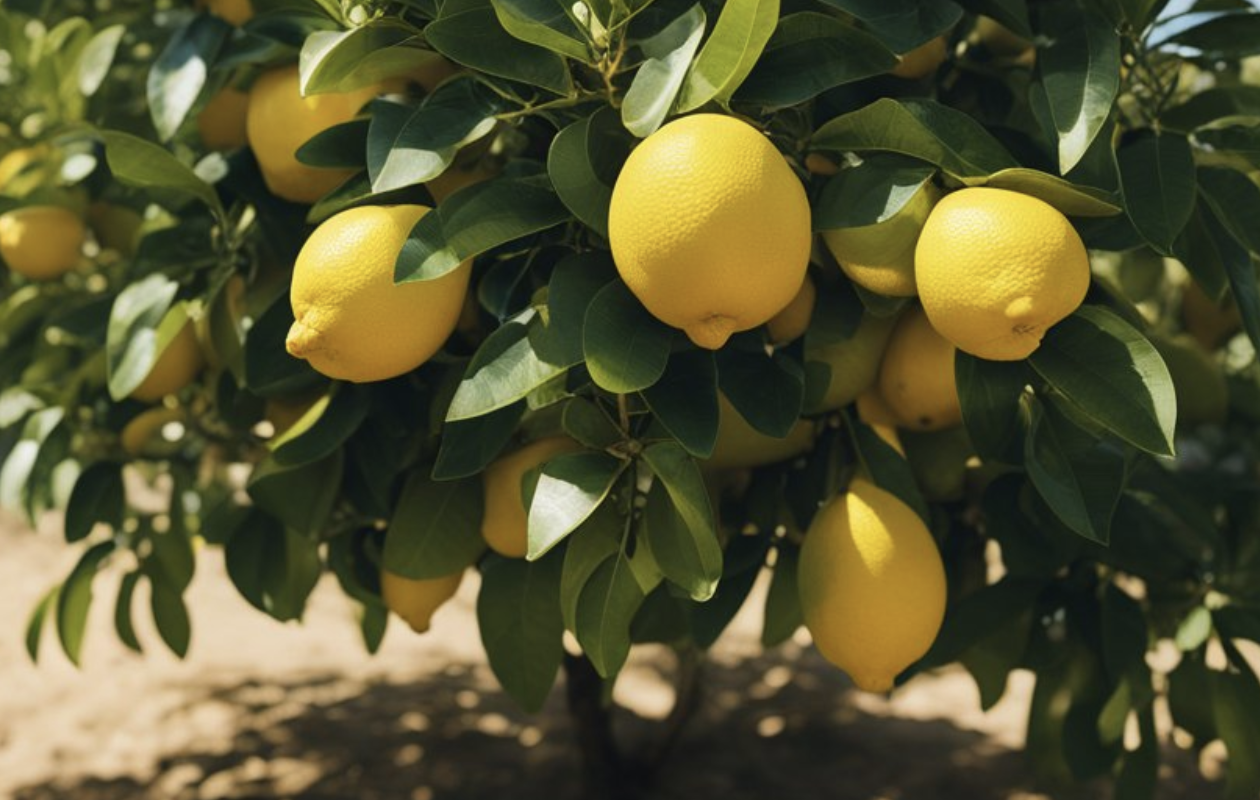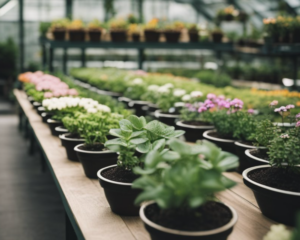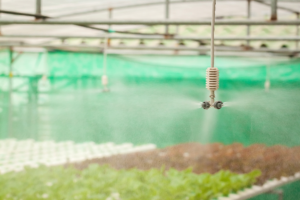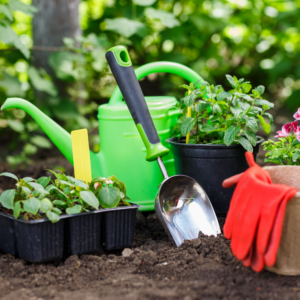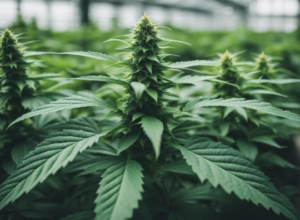Growing fruit trees in a greenhouse opens up a world of possibilities for gardeners and commercial growers alike. By creating a controlled environment, we’re able to extend the growing season and cultivate a variety of fruit trees that might not otherwise thrive in our local climate. The warmth and protection of a greenhouse enable us to manage temperature, humidity, and light, factors that significantly impact plant growth and fruit production.
Selecting the right fruit trees for our greenhouse is crucial. We consider factors such as the size of the tree, its rootstock, and its chilling requirements to ensure successful growth and fruiting. Moreover, we look into proper planting techniques and management practices that include soil preparation, fertilization, and irrigation to support the health and productivity of the trees. Understanding the specifics of pollination is also important because, without effective pollination, even the most well-tended trees won’t bear fruit.
Key Takeaways
- Greenhouses provide a controlled environment for growing fruit trees outside their typical zones.
- Choosing suitable fruit trees and understanding greenhouse management is vital for fruit development.
- Effective pollination practices are essential to ensure that greenhouse fruit trees bear fruit.
Understanding Greenhouses
Greenhouses allow us to manipulate the environment to extend growing seasons and optimize crop growth. Mastering this control leads to healthier fruit trees and greater yields.
Climate Control in Greenhouses
In a controlled environment, we manage temperature and humidity to simulate ideal conditions. For temperature, a thermostat-regulated gas or electric heater is often necessary, especially in colder months. To control humidity and ventilation, we install automated systems that can open vents or activate fans. Ensuring consistent climate conditions is crucial — it’s not just about the heat; it’s also about preventing overheating and providing fresh air.
Light and Heating
Light is a key piece of the puzzle. We make sure there’s enough natural sunlight but also supplement with grow lights when the days get shorter. In terms of heating, we often use a gas or electric heater to maintain a steady temperature, as fruit trees can be sensitive to fluctuations.
Greenhouse Materials and Layout
The structure and its interiors play a big part in efficiency. We’re talking about containers and pots—from large pots for mature trees to clay pots that offer breathability for roots. We lay out paths and space for trees to not only accommodate their current size but also their growth. Greenhouse coverings range from glass to various plastics, each impacting light transmission and insulation differently. It’s all about finding what works best for us and our trees.
Selecting Fruit Trees for Greenhouses

When we’re selecting fruit trees for greenhouses, we focus on two crucial factors: the available space and the appropriate varieties for the environment. Let’s break it down.
Size and Space Considerations
Selecting the right size fruit tree is essential for greenhouse cultivation. We consider both the mature height and root system of the tree. Typically, dwarf varieties are our go-to choice due to their smaller stature. For example, dwarf citrus trees can be an excellent fit as they grow between 8-12 feet tall, making them manageable within the confined space.
Here’s a quick guide to help us out:
- Dwarf Citrus Trees: Ideal spacing of 6-10 feet apart.
- Apple and Pear Trees: Opt for “spur” varieties, needing around 8 feet between trees.
- Peach Trees: Dwarf varieties stay around 6 feet tall; space them about 5 feet apart.
When planting directly in-ground, we must respect the space each tree will need; however, for containers, we can be more flexible. Just ensure that we provide a pot large enough for the tree’s root system while considering that container fruit trees require more frequent watering.
Varieties of Fruit Trees
We have a plethora of fruit tree varieties to choose from, each suited to a different climate within the greenhouse. Here’s a snapshot:
- Citrus: Options include oranges, lemons, and limes. These are well-suited for Mediterranean and subtropical greenhouse environments.
- Temperate Fruits: Apples and pears thrive here, especially when we opt for dwarf varieties.
- Tropical Fruits: Think about mangoes and avocados for a tropical setup; they’ll need higher temperatures and humidity.
- Peaches: Dwarf peach trees are perfect for a temperate to subtropical greenhouse.
It’s important we select varieties that match our greenhouse conditions. Tropical fruit trees won’t thrive in a temperate climate zone and vice versa. Always check the specific needs of each variety before we plant to ensure we provide the best care possible.
Planting and Management
When we decide to grow fruit trees in a greenhouse, our focus should be on creating optimal conditions for planting and managing the trees. Attention to soil composition, watering, fertilization, and pruning plays a significant role in the successful growth of our fruit trees.
Soil and Potting
First up, we need to choose the right soil and containers for our trees. Ideally, we should go for well-draining soil mixed with compost to achieve a fertile base. A quality mix would look something like this:
- 60% good garden soil
- 30% compost
- 10% perlite or sand for drainage
It’s crucial to pick containers that help a tree’s root system thrive. Clay pots or containers labeled as ‘well-draining’ can be a good match, especially for fruit trees with tap roots.
Watering and Fertilization
We’ve got to balance our watering. Too much or too little, and we could be in trouble. A drip irrigation system can help us maintain consistency. Here’s what a simplified schedule might look like:
- Spring to Summer: Water frequently as the fruit develops.
- Fall to Winter: Reduce watering to match the tree’s rest period.
As for fertilizing, steady doses during the growing season ensure our trees are getting the nutrients they need. Here’s a quick guide on how we do it:
- Early Spring: Apply slow-release fertilizer pellets to kick-start growth.
- Flowering Period: Introduce a phosphorus-rich fertilizer to help with fruiting.
- Growing Season: Monthly doses of a balanced N-P-K (nitrogen, phosphorus, potassium) fertilizer.
Pruning and Growth Control
To ensure our trees don’t outgrow the greenhouse, we need to prune them properly. This involves:
- Removing dead or diseased branches to keep the tree healthy.
- Regulating growth by trimming back the top and sides of the tree.
Keeping on top of pruning not only manages the size but also helps increase sunlight exposure and air circulation, which are keys to producing quality fruit.
Pollination and Fruit Development

In our journey of growing greenhouse fruit trees like citrus, we understand that successful pollination is essential for fruits to develop. Let’s explore the specific ways we achieve this and how we handle the challenges along the way.
Manual vs. Natural Pollination
When we don’t have the luxury of natural pollinators like bees and birds in our greenhouse, we take matters into our own hands. Manual pollination involves us gently transferring pollen from flower to flower with brushes or swabs. This careful process ensures that our citrus trees are pollinated, promising a fruitful harvest. Meanwhile, natural pollination thrives when we invite pollinators into the greenhouse. By doing this, our trees benefit from the symbiotic relationships with these creatures, leading to the natural development of fruits.
Fruit Set and Maturation
Once our citrus flowers have been pollinated, the next critical phase is fruit set. This stage sees the development of tiny fruitlets which will mature into the citrus fruits we aim for. We closely monitor factors like temperature and humidity, ensuring they are optimal for fruit maturation. Here’s a quick breakdown:
- Temperature: 68˚F to 86˚F (day), 59˚F to 68˚F (night)
- Humidity: Around 50% to 80%
Maintaining these conditions during the growing season is vital for our citrus trees to successfully bear fruit.
Pests, Diseases, and Prevention
Our greenhouse isn’t immune to pests and diseases; aphids and various fungal infections can threaten our progress. To shield our fruit trees, we implement an Integrated Pest Management (IPM) strategy that includes both prevention and intervention. We employ beneficial insects, like ladybugs, to naturally keep pest populations like aphids in check. Regular inspections and clean growing conditions reduce the risk of diseases. When prevention isn’t enough, we use appropriate treatments that are safe for both our plants and the environment.
Special Considerations for Different Species
When we’re talking about greenhouse fruit trees, it’s crucial to tailor care and conditions to each species. Let’s dive into some species-specific guidance that’ll help us thrive.
Citrus Fruit Trees
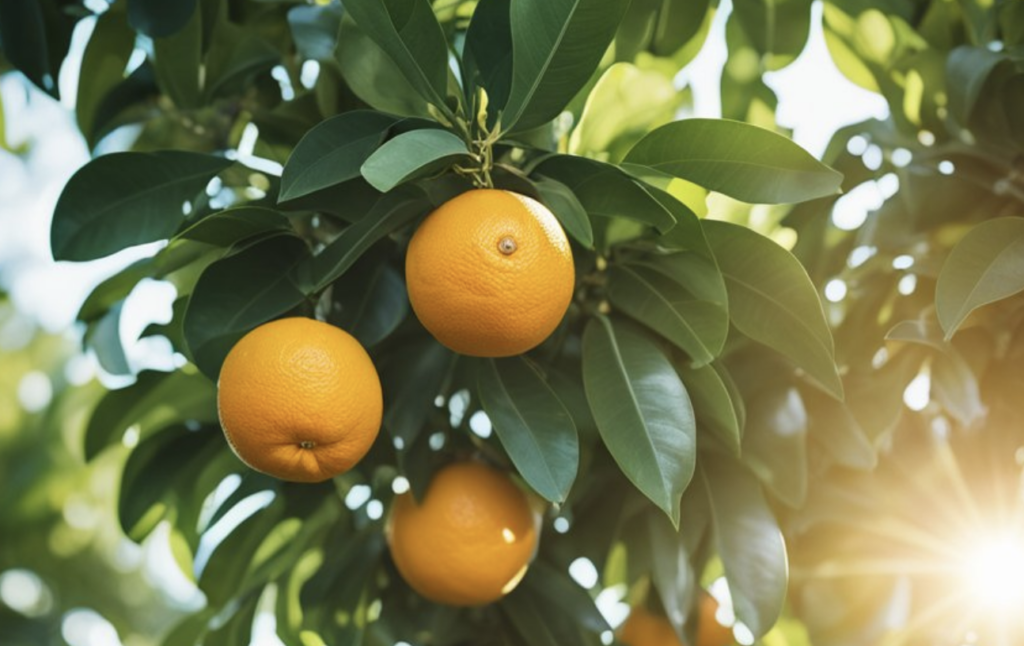
Citrus trees such as lemons, limes, and oranges are pretty popular in greenhouses. We must provide them with plenty of light and a consistent temperature above freezing – ideally between 55°F and 85°F. They typically do well in large containers, allowing us to move them around if needed. Cross-pollination isn’t a must for many citrus varieties, but it can help us boost our yields.
- Light: Full sun (6-8 hours)
- Temperature: 55°F – 85°F
- Soil: Well-draining, slightly acidic
Tropical and Subtropical Fruit Trees
For tropical and subtropical trees like bananas, mangoes, lychees, guavas, and avocados, our main concern is maintaining high humidity and warmth. They tend to prefer temperatures that are consistently above 60°F. For most, especially bananas and avocados, growing in containers can be a feasible option, although they may require larger sizes as they grow.
- Humidity: 50-60%
- Temperature: 60°F and above
- Container Size: Large, with room to grow
Stone Fruit and Pome Trees
Moving on to stone fruit and pome trees, we’re looking at species like peaches, nectarines, cherries, and apricots as well as pomegranates and pears. Our focus here should be on chill hours – the amount of cold they need over winter to break dormancy. While some may adapt to greenhouse environments, providing the necessary cold period can be a challenge. Cross-pollination is often crucial here, so planning for compatible varieties or grafts can help.
- Chill Hours: Required for breaking dormancy
- Cross-pollination: Often necessary
Uncommon Greenhouse Fruit Trees
Lastly, we have the less common greenhouse fruit trees like fig trees, olive trees, grapevines, and even walnut trees. Figs and pomegranates are among the more forgiving and adaptable to greenhouse conditions. They typically don’t require cross-pollination and can even be grown from cuttings rather than grafted trees. Vines for grapes and tomatoes work well on trellises, allowing us to maximize our vertical space.
- Figs/Pomegranates: Adaptable, self-pollinating
- Grapes/Tomatoes: Suitable for trellising
Harvesting and Storage
When we notice our fruit trees are brimming with ripe fruits, we know it’s harvest time. We gently pick the fruits by hand, ensuring not to damage the branches. Timing is crucial, so we keep a close eye on the color, firmness, and aroma, as these are telltale signs of ripeness.
Temperature plays a big part in the post-harvest game. To keep our fruits fresh longer, we store them at low temperatures as soon as possible. Here’s a quick breakdown of our storage process:
- Apples and Pears: We store these in a cool, humid place at around 32-35°F (0-1.7°C).
- Citrus Fruits: They prefer slightly warmer temps, between 38-48°F (3.3-8.9°C).
In a cold climate, especially during winter, we might need to get creative. Sometimes we use insulated storage or even our own makeshift root cellars.
| Fruit Type | Ideal Storage Temperature | Suggested Humidity |
|---|---|---|
| Apples | 32-35°F (0-1.7°C) | 90-95% |
| Pears | 32-35°F (0-1.7°C) | 90-95% |
| Citrus Fruits | 38-48°F (3.3-8.9°C) | 85-90% |
Remember: Before we tuck them away, we check for any signs of damage or disease – those fruits are best enjoyed right away or processed. This ensures we don’t spoil the whole batch.
By sticking to these methods, we’ve found our harvest stays in tip-top shape for much longer, giving us a taste of summer even in the heart of winter.
Companion Planting and Biodiversity
When we talk about growing our greenhouse fruit trees, we’re not just focusing on the trees themselves. We’re also turning our attention to the tiny details of the ecosystem within our greenhouse, creating a diverse and balanced environment. Let’s break down why companion planting is a game-changer for us.
First up, flowers. Yep, they’re not just for show. We plant flowers like marigolds and nasturtiums among our fruit trees because they’re fantastic at attracting beneficial insects. These bugs act like our personal army against pests that can harm our trees. Plus, they can improve pollination for better fruit yield.
Now, let’s quickly chat about gardening with intention. By choosing companion plants that cover the soil, like clover or creeping thyme, we effectively suppress weeds without breaking our backs. Here’s a nifty list of plants that play well with others:
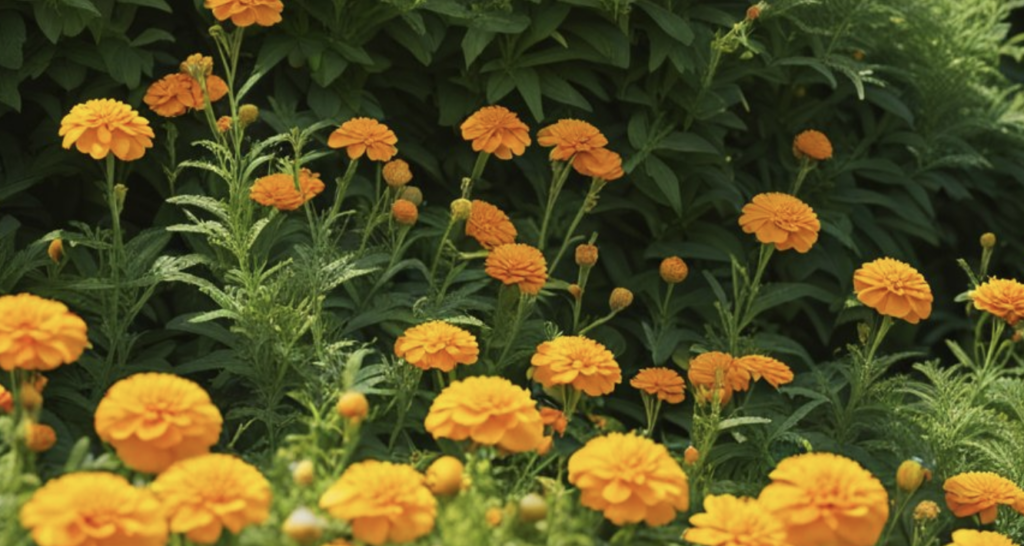
- Marigolds: Repel pests, look pretty.
- Basil: Boosts flavor, wards off thrips.
- Nasturtiums: Trap aphids, and bonus, they’re edible!
By being strategic with what we plant, we are reducing our need for chemical interventions. And hey, who wouldn’t want fewer chemicals in their life?
Encouraging a rich tapestry of life, we’re playing the long game for our fruit trees. Plant divas, they thrive with friends that bring different benefits to the table, keeping the ecosystem in our greenhouse robust. So remember, it’s not just the tree that makes the fruit—it’s the whole diverse squad working together.
Innovative Techniques and Technologies
When we’re talking about growing fruit trees in a greenhouse, we’ve got to highlight some smart tech that makes things easier and the fruit sweeter.
First, let’s chat about grow lights. These babies are game-changers! We use LED grow lights because they’re energy-efficient and can mimic the sun’s spectrum, pretty much fooling our trees into thinking summer’s endless.
Now, onto fans. In a greenhouse, you can’t just rely on a breeze to pass by, so we install fans to keep the air moving. This isn’t just for a cool photo of leaves fluttering; it’s crucial for reducing disease and keeping the temperature even.
- Greenhouse Environment:
- Temperature: Controlled with a mix of ventilation and heating.
- Humidity: Monitored and adjusted with humidifiers or dehumidifiers.
- CO2 Levels: Sometimes we boost them a bit to give the photosynthesis a turbo-charge.
Operating an unheated greenhouse? We’ve got strategies there too. For example:
- Insulation: Using bubble wrap, we can keep the warmth in without fancy heating.
- Plant Choice: We go for fruit trees that can handle a bit of chill.
- Cold Frames: Mini-greenhouses within our greenhouse offer extra protection.
These techniques and tech keep our trees thriving. With a bit of trial and error, we dial in the perfect conditions for some grade-A fruit.
Success Stories and Case Studies
In our journey, we’ve seen tremendous success stories of folks growing fruit trees in greenhouses. For example, John from California transformed his backyard with a variety of citrus trees. Beautiful lemons, oranges, and tangerines now thrive where he once struggled to grow anything due to pests and unpredictable weather.
Linda’s Peach Haven Linda in Georgia utilized her greenhouse to cultivate peach trees, normally challenging due to her region’s climate. With controlled conditions, she harvests juicy peaches year-round, proving that with a bit of ingenuity, greenhouse fruit trees can defy traditional growing seasons.
- Apple Adventures: We discovered a community project in Oregon where a group of neighbors set up a communal greenhouse. Their apple trees, pollinated by hand, are a local hit.
- Tropical Triumph: Our friend Pedro in Maine managed to grow tropical fruit trees, like guava and mango, by mimicking tropical conditions in his greenhouse—a real game-changer in a state known for its cold.
Here’s a quick look at the types of trees and their success rates we’ve seen:
| Fruit Tree Type | Success Rate in Greenhouses |
|---|---|
| Citrus Trees | High |
| Peach Trees | Moderate to High |
| Apple Trees | Moderate |
| Tropical Trees | Moderate (with extra care) |
We prioritize sharing our knowledge and experiences. Each of these accounts not only showcases the potential for year-round cultivation but also the sense of community and shared passion in the world of greenhouse gardening.
Tips and Tricks for Beginners
When we start on our greenhouse fruit tree journey, it’s crucial to set ourselves up for success. Here’s what we need to keep in mind:
- Choosing the Right Trees: We’ll want to pick fruit trees that are known to thrive in greenhouse conditions. Think about size too; dwarf varieties are often more manageable.
- Ideal Watering Habits: Watering is less about frequency and more about consistency and amount. We should aim to keep the soil moist but not waterlogged. Using a moisture meter can help us avoid guesswork.
- Light and Location: Our trees love light, at least six to eight hours of sunlight a day. If our greenhouse can’t provide enough natural light, we may consider grow lights.
- Pruning and Care: Pruning helps us manage the growth and health of our trees. We should regularly remove dead or overgrown branches to encourage fruit production.
Here’s a quick reference table for light and watering:
| Activity | Description |
|---|---|
| Watering | Check soil moisture and water deeply but infrequently. |
| Light Check | Ensure trees get 6-8 hours of light or supplement with lamps. |
Remember, patience is key. It takes time for fruit trees to mature and bear fruit. By sticking to these fundamentals, we can enjoy a bountiful greenhouse harvest. Keep it simple and enjoy the process!
Frequently Asked Questions
In this section, we tackle the common queries about nurturing fruit trees within the sheltered confines of a greenhouse.
What are the best types of fruit trees to grow in a small greenhouse?
In a small greenhouse, we favor compact trees such as dwarf varieties of citrus, figs, and peaches. They don’t require much space and still produce a fruitful bounty.
Can dwarf fruit trees be productive when planted in a greenhouse?
Absolutely, dwarf fruit trees can be quite productive in a greenhouse setting. We ensure they receive adequate light, water, and nutrients, and they often reward us with an impressive yield.
Which fruit trees thrive most in a greenhouse environment?
Citrus trees, like lemons and oranges, flourish in the warmth of a greenhouse. Figs and pomegranates are also high on our list as they prefer the stable conditions a greenhouse offers.
Are there any specific methods to increase fruit yield in greenhouse trees?
To boost fruit yield, we monitor and control the temperature, humidity, and pollination process within the greenhouse. Proper pruning and fertilization are key practices as well.
How do you manage tall fruit trees in a standard-sized greenhouse?
We apply pruning techniques to control the height and spread of taller fruit trees. This is essential to ensure they fit comfortably within the vertical space of a standard greenhouse.
What strategies can you use to grow fruit trees in a greenhouse during the winter?
We rely on heaters to maintain a steady temperature and grow lights to compensate for the shorter daylight hours in winter. Insulating the greenhouse also helps to keep our fruit trees warm and happy.

